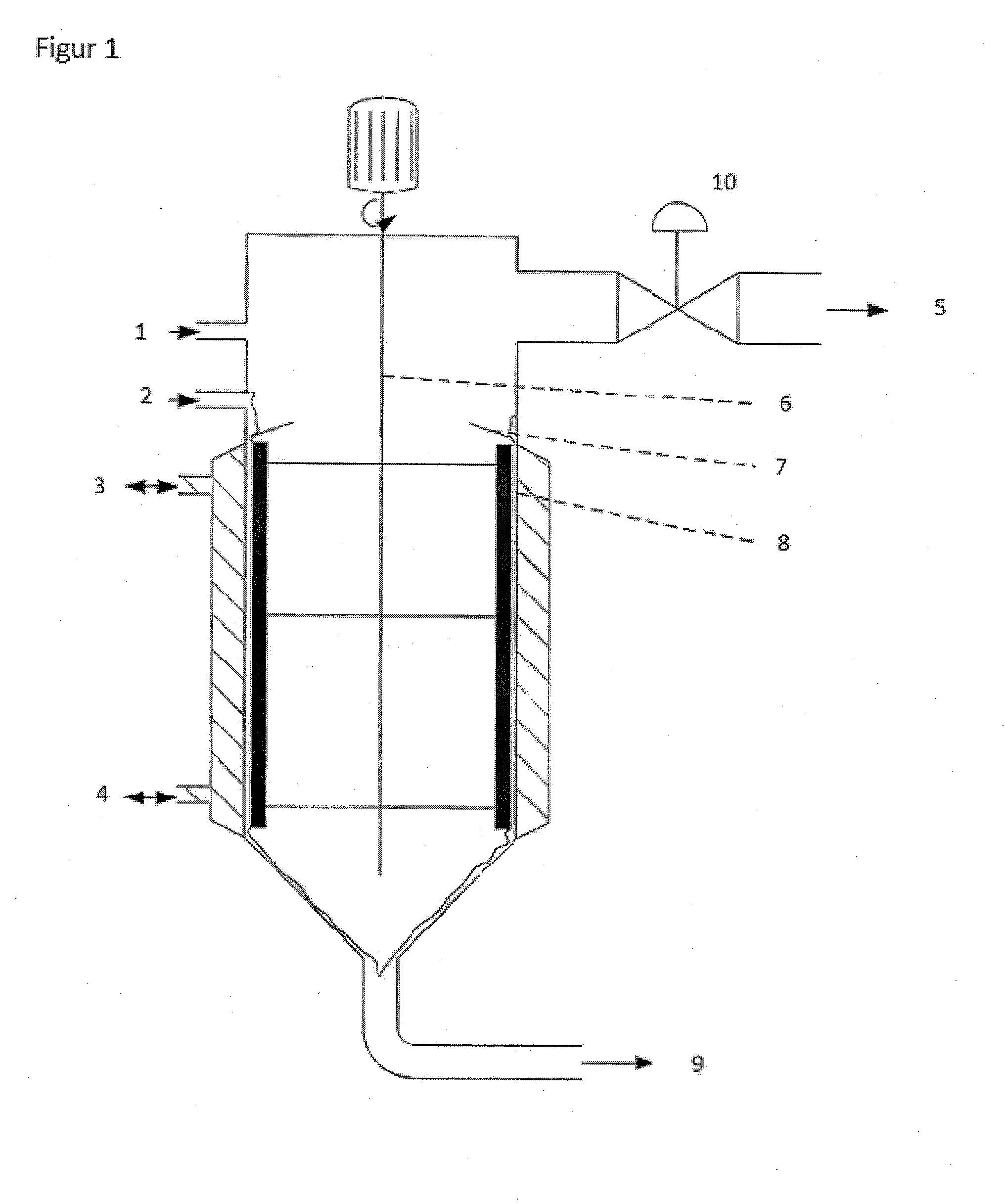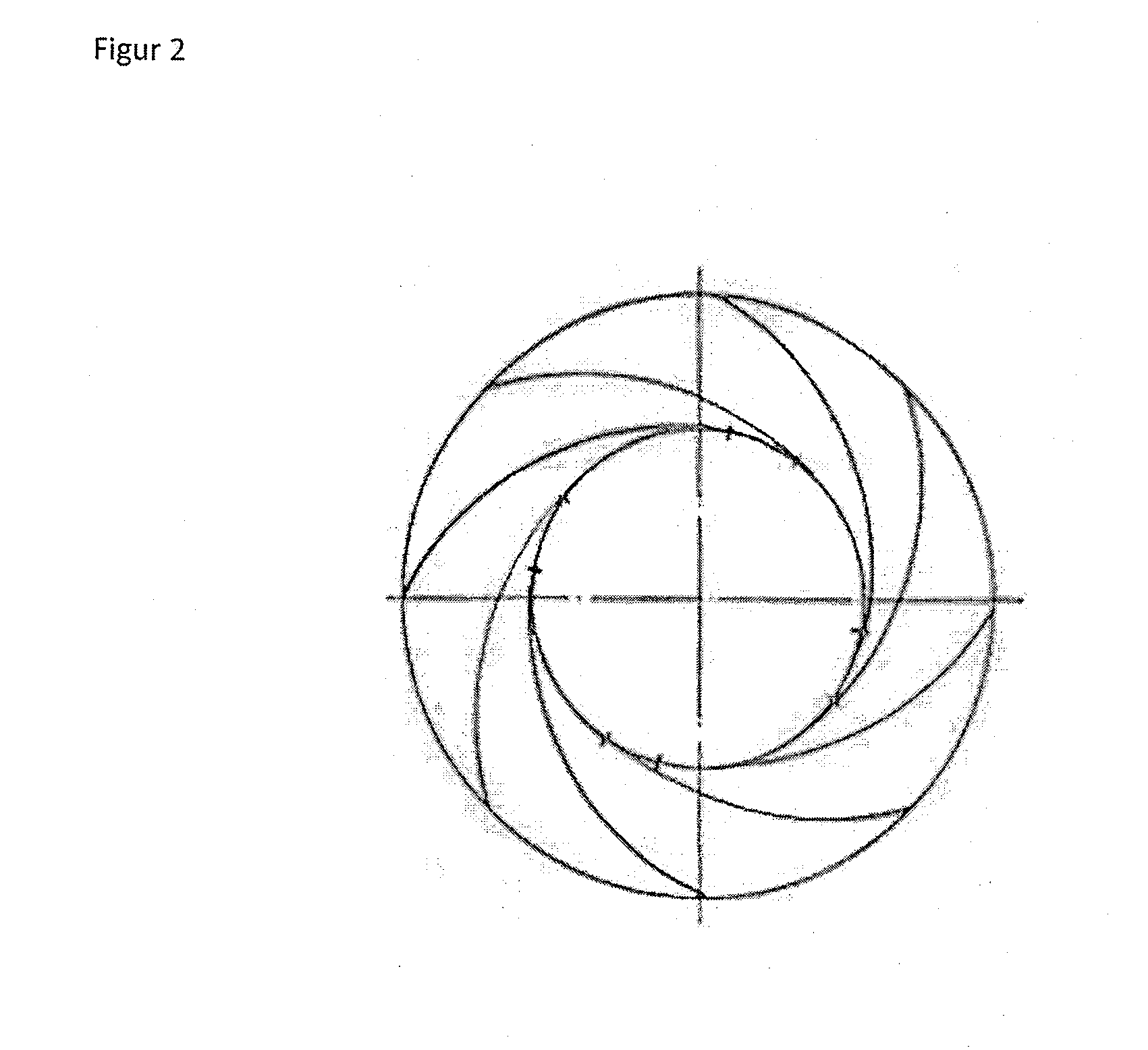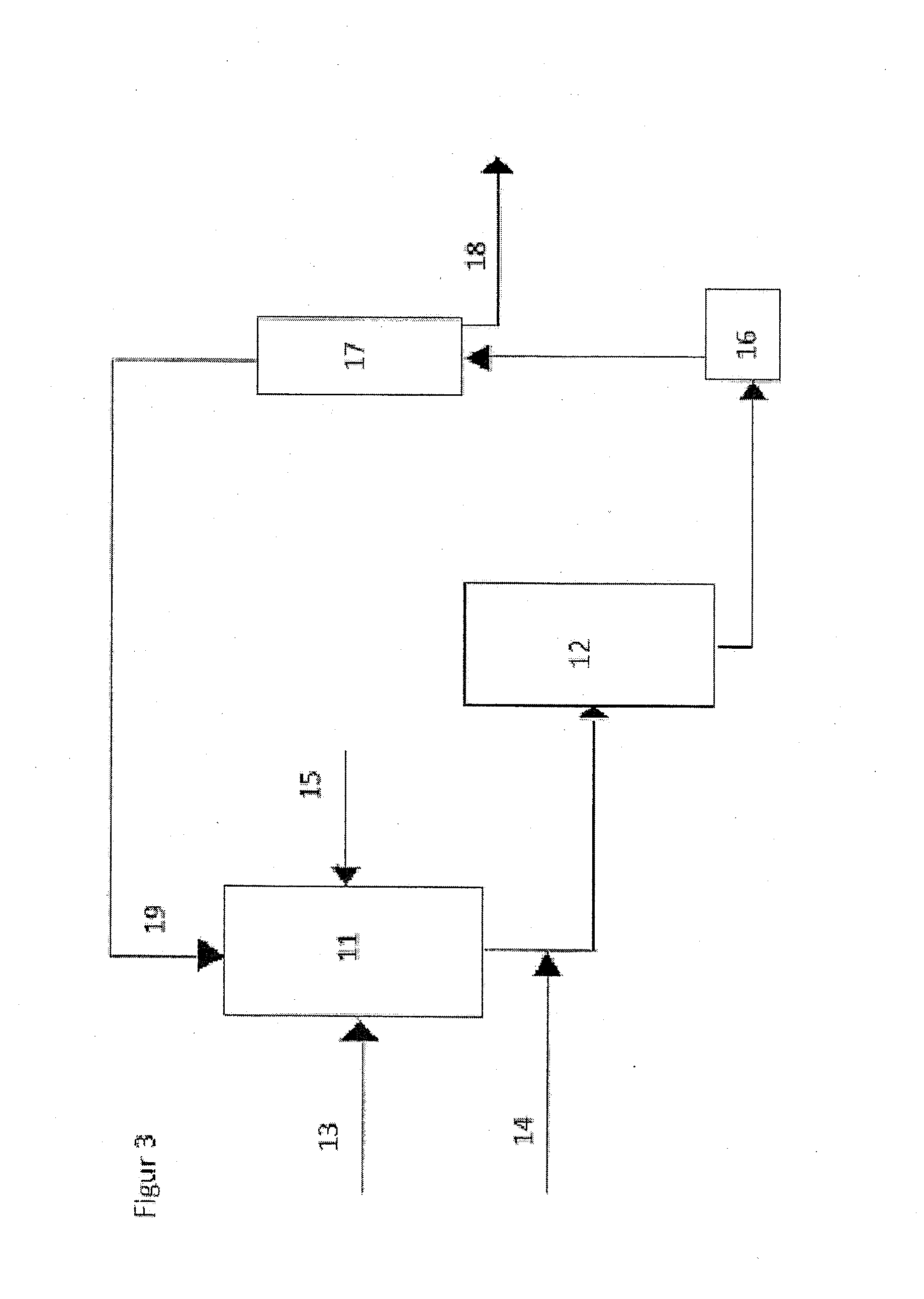Process for the Production of 4-Chloroacetoacetyl Chloride, 4-Chloroacetoacetic Acid Esters, Amides and Imides
a technology of acetoacetyl chloride and acetoacetic acid esters, which is applied in the preparation of carboxylic compounds, carboxylic acid halides, organic chemistry, etc., can solve the problems of low selectivity, low yield, and inability to determine efficient production conditions, so as to reduce the residence time and increase the residence time. , the effect of high yield
- Summary
- Abstract
- Description
- Claims
- Application Information
AI Technical Summary
Benefits of technology
Problems solved by technology
Method used
Image
Examples
example 1
Production of 4-CAAMe on Pilot Scale
[0052]The reaction of chlorination of diketene takes continuously place on pilot scale in a wiped-film-reactor (chlorination reactor) with 1.5 m2 area. The reactor has 20 wipers. The wipers are aligned in five rows along the reactor. Each row has four wipers separated 90° from each other. The wipers of one row are 25° staggered in relationship to the position of the wipers corresponding to the nearby row. The wipers are assembled as spiral-wound Teflon plates. FIG. 2 shows schematically how the wipers are mounted inside the reactor. The reactor-rotor speed was varied between 80 rpm and 500 rpm.
[0053]The reactants chloride gas (Cl2) and diketene are introduced at the top of the reactor. The solvent in this reaction is dichloromethane (MeCl2). Before diketene is fed into the reactor, it is diluted in MeCl2. The mixture of diketene and MeCl2 is prepared inline using a static mixer. In order to remove the heat produced by the reaction between Cl2 and ...
example 2
Production of 4-CAAEt on Pilot Scale
[0058]The production of 4-CAAEt on pilot scale is carried out using the same setup as the production of 4-CAAMe described in the example 1.
[0059]The reactants chloride gas (Cl2) and diketene are introduced at the top of the reactor. The solvent in this reaction is dichloromethane (MeCl2). Before diketene is fed into the reactor, it is diluted in MeCl2. The mixture diketene and MeCl2 is prepared inline using a static mixer. In order to remove the heat produced by the reaction between Cl2 and diketene, the reactor is intensively cooled with a closed cooling system. During the reaction of Cl2 with diketene, the intermediate product 4-chloro-3-oxobutanoyl chloride (4-CAAC) is formed.
[0060]4-CAAEt is produced by adding ethanol (EtOH) to the reacting mixture leaving the chlorination reactor. EtOH is directly added in the pipeline discharging in the esterification reactor. During the reaction of esterification 4-CAAEt and HCl are formed. The gases of the...
example 3
Production of 4-CAAEt on Industrial Scale
[0064]The reaction of chlorination of diketene takes continuously place on industrial scale in a wiped-film-reactor (chlorination reactor) with 4 m2 area. The reactor has 160 rolls as wiper elements. The wiper elements are assembled as cylindrical graphite rolls. The centrifugal force presses the rolls to the reactor wall. The rolls are aligned in four vertical columns along the reactor circumference. Each column has 40 rolls. The reactor-rotor speed was varied between 40 rpm and 200 rpm.
[0065]The reactants chloride gas (Cl2) and diketene are introduced at the top of the reactor. The solvent in this reaction is dichloromethane (MeCl2). Before diketene is fed into the reactor, it is diluted in MeCl2. The mixture diketene and MeCl2 is prepared inline using a static mixer. In order to remove the heat produced by the reaction between Cl2 and diketene, the reactor is intensively cooled with a closed cooling system. During the reaction of Cl2 with ...
PUM
| Property | Measurement | Unit |
|---|---|---|
| reaction temperature | aaaaa | aaaaa |
| reaction temperature | aaaaa | aaaaa |
| reaction temperature | aaaaa | aaaaa |
Abstract
Description
Claims
Application Information
 Login to View More
Login to View More - R&D
- Intellectual Property
- Life Sciences
- Materials
- Tech Scout
- Unparalleled Data Quality
- Higher Quality Content
- 60% Fewer Hallucinations
Browse by: Latest US Patents, China's latest patents, Technical Efficacy Thesaurus, Application Domain, Technology Topic, Popular Technical Reports.
© 2025 PatSnap. All rights reserved.Legal|Privacy policy|Modern Slavery Act Transparency Statement|Sitemap|About US| Contact US: help@patsnap.com



